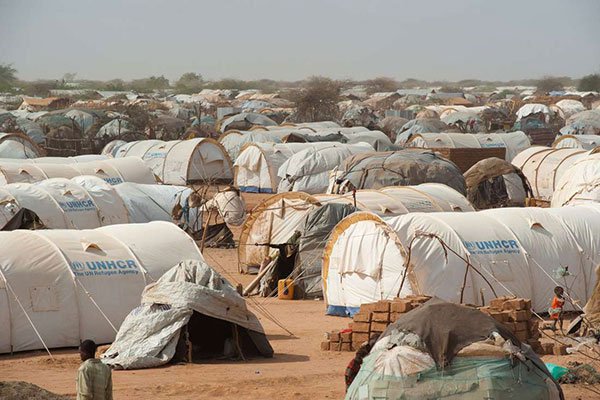Twenty days after the terrorist attack at Nairobi’s DusitD2 complex, intelligence sources say that 12 suspects have been arrested at the sprawling Dadaab refugee camp — signalling the complex balance between internal security and offering humanitarian aid at the third largest refugee camp in the world.
Sources privy to the ongoing investigations told Nation that one of the Dusit complex attackers passed through Dagahaley camp “where he was not only facilitated to get into communication with other attackers, but also given transportation logistics to Nairobi”.
The highly-placed source said that three suspected Al-Shabaab terrorists armed with AK-47 rifles and several rounds of ammunition were also arrested last week in Hagadera refugee camp in Dadaab.
“One of the suspects was found with two New Zealand passports bearing different names,” said the source — an indicator that Al-Shabaab networks are more widespread than earlier thought.
CLOSURE
The arrest came at a time when a US spy agency in its January 29 report said that Al-Shabaab is likely to continue posing threats to the nations of East Africa in the coming years — with security agents fearing that Dadaab continues to be a soft-landing for terrorists.
Although President Uhuru Kenyatta had in March 2017 ordered the closure of Dadaab camp in the wake of the Garissa University College attack in April 2015 and the Westgate shopping mall raid on September 21, 2013, he was heavily criticised by human rights organisations.
Amnesty International said, “by offering no options other than return to Somalia, the (Jubilee) government (was) effectively forcing refugees to leave Kenya”.
Interior Principal Secretary Karanja Kibicho has then described Dadaab refugee complex as a “breeding ground for terrorists”, with President Kenyatta asking the UNHCR to relocate the camps which share the border with Somalia.
SECURITY
But the government’s bid to close down the camps was stopped by the High Court after Justice John Mativo ruled that the then Interior Cabinet Secretary — the late Joseph Nkaissery — and PS Karanja Kibicho, had acted beyond their powers in issuing the directive to close down the camp.
The court also declared the repatriation of refugees unconstitutional and described the targeting of Somalis as discriminative.
“We shall obey the court order, but we shall not compromise on national security,” Dr Kibicho told the Nation after the ruling.
It is estimated that by the end of 2018, the population of Somali refugees and asylum seekers in the complex was 235,269 scattered in four camps- Dagahaley, IFO, IFO 2 and Hagadera.
Although in November 2013 Kenya and Somalia signed a tripartite agreement with the UNHCR to guide the voluntary repatriation of refugees, the latest figures indicate only 80,144 refugees have been repatriated to Somalia on a voluntary basis since December 2014, and that there had been a decrease in voluntary returns in 2018.
SUSPECTS
An internal briefing seen by the Nation now describes Dadaab as “a thorn in the flesh” for Kenya due to “insecurity incidences related to terrorism, human trafficking and arms smuggling”.
The report notes that on January 24 at Dagahaley, police gunned down a suspected terrorist and recovered an AK-47 rifle, five magazines and 26 rounds of ammunition.
Also on January 20, eight hooded gunmen armed with AK-47 rifles had attempted to attack a Chinese road construction site before escaping.
“We believe that these attackers escaped into the camps and this points to the challenges arising from continued hosting of refugees in Dadaab complex,” the source said.
“The camps are also a conducive environment for arms smuggling from Somalia, human smuggling, documents facilitation and movement of contraband goods, which are exploited by terrorists to sustain their activities,” the source added.
MANHUNT
With the accelerated crackdown on Al-Shabaab operatives in Somalia, intelligence sources believe that the Dadaab camps have become the safe haven for escaping terrorists.
“There is an influx of aliens to the refugee camps running away from security operations in Somalia, some of whom could be Al-Shabab operatives disguised as asylum seekers,” the source said.
“We believe that the refugee camps are still being used as logistical, transit, and facilitation centres for Al-Shabaab operatives.”
Source – Daily Nation




